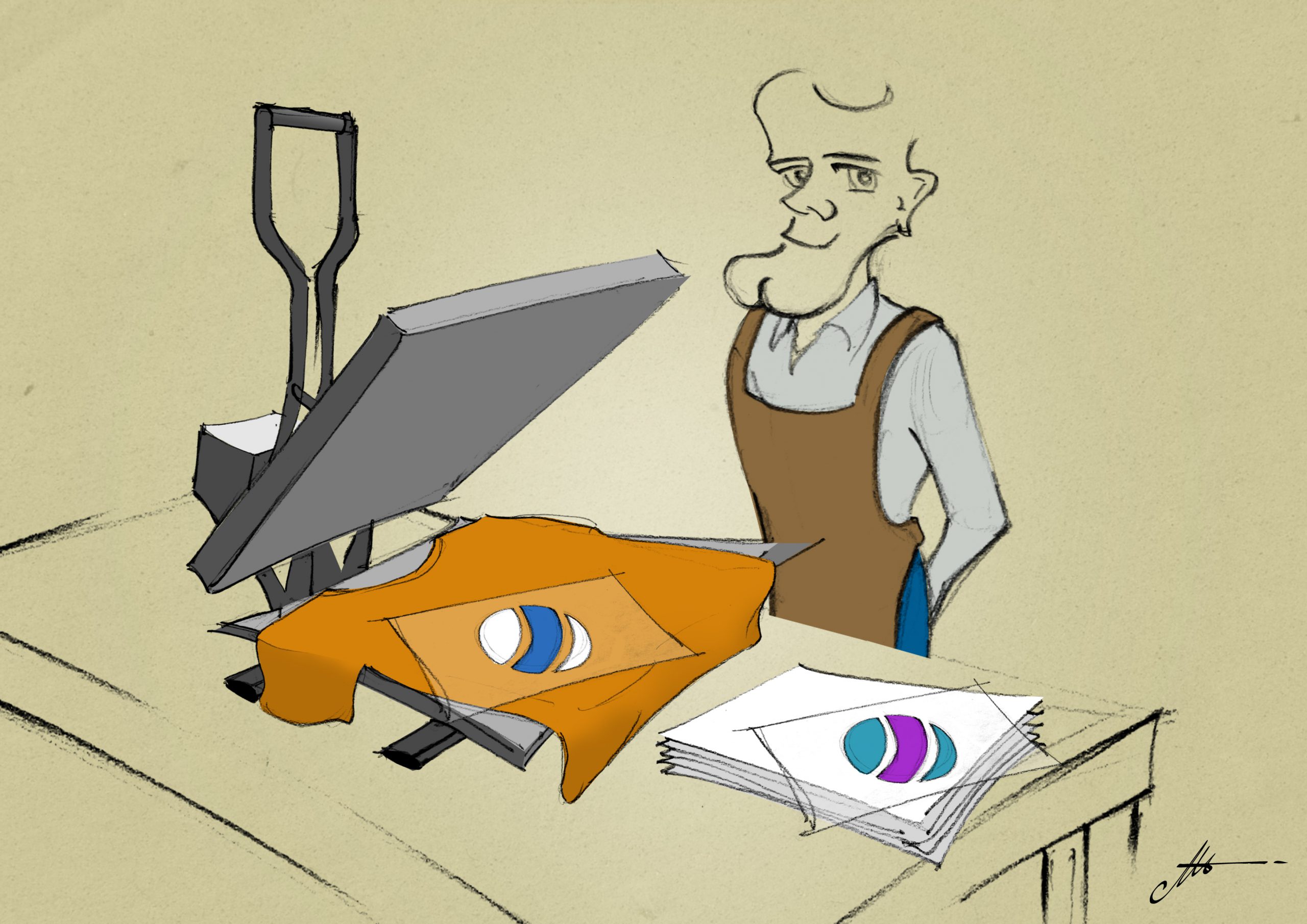Hi, my wife and I have decided to turn our loft into a workshop for printing on T-shirts, caps, etc.
We don’t have much to spend on the initial investment, but we’d like to get off to a good start.
I saw that on your website there are a number of heat presses, plotters, starting kits, etc. at different prices. Could you make some recommendations please?
Since you’re speaking about a plotter and heat presses, I imagine you’re thinking about a project involving digital transfer printing or heat-sealed products.
For this type of activity you would need the following equipment:
– a good laser printer (with or without white)
– a cutting plotter
– a heat press
The choice of models depends on the amount of work you think you’ll be doing and on your budget.
For modest production quantities, the inexpensive models that you can find on the website are perfectly fine: they are all of good quality.
Laser printer: OKI printers are considered to be the most reliable when it comes to transfer printing; indeed, producers of laser transfer paper use OKI printer toners to fine-tune their products. Printers that include a white toner, since they’re able to print in white, are capable of resolving any graphic design issues that might arise when transferring colours onto fabric. If you don’t have one of these printers, this kind of problem can be solved by using transfer paper that is specifically designed for coloured or dark fabrics, i.e. with a white background.
Cutting plotter: the C30 plotter has the same sturdiness, the same mechanical components and the same internal motherboard as the larger C60 and C120 models, the only difference is the cutting length. It works well if managed from a Microsoft PC, but if a Mac is used some of its functionality is lost. The Silhouette Cameo plotter is perfect for those who are looking to save some money: it’s Japanese made and is more intuitive to use than the C30. It can handle files with designs up to 3 m in size.
Heat presses: the cheap 38×38 model is opened manually and appears simple, but it works well, even if used continuously for many hours. The Secabo TC5 model is heavier and more robust, it has a better finish and automatic opening: when the set time is completed, it opens on its own. A sensible way to go could be: Start with a 38×38 Eco heat press; if things go well, move on to the TC7 40×50 heat press, which also enables A3 transfers.

